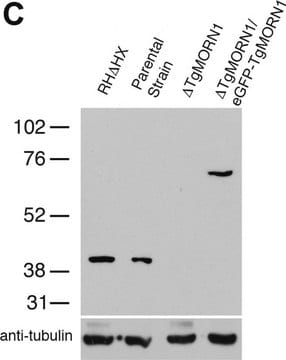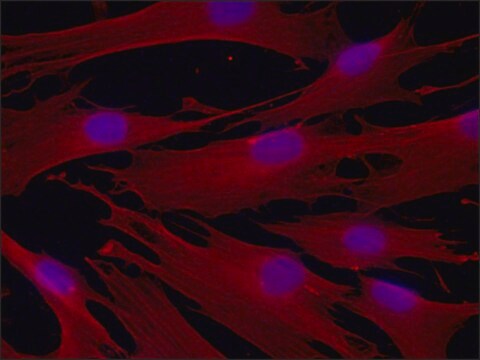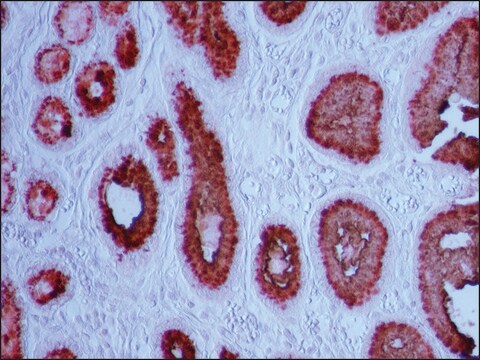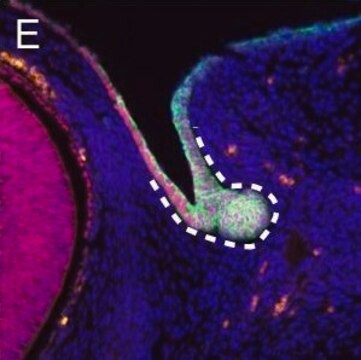T7941
Monoclonal Anti-β-Tubulin IV antibody produced in mouse
clone ONS.1A6, ascites fluid
Sinónimos:
Anti-DYT4, Anti-TUBB4, Anti-beta-5
About This Item
Productos recomendados
origen biológico
mouse
Nivel de calidad
conjugado
unconjugated
forma del anticuerpo
ascites fluid
tipo de anticuerpo
primary antibodies
clon
ONS.1A6, monoclonal
mol peso
antigen ~55 kDa
reactividad de especies
hamster, chicken, human, bovine, rat, mouse
técnicas
immunohistochemistry (formalin-fixed, paraffin-embedded sections): suitable
indirect ELISA: suitable
microarray: suitable
western blot: 1:400 using cultured human breast adenocarcinoma cell line MCF-7
isotipo
IgG1
Condiciones de envío
dry ice
temp. de almacenamiento
−20°C
modificación del objetivo postraduccional
unmodified
Información sobre el gen
human ... TUBB4(10382)
mouse ... Tubb4(22153)
rat ... Tubb4(29213)
Descripción general
Inmunógeno
Aplicación
Immunocytochemistry (1 paper)
Immunofluorescence (1 paper)
Western Blotting (1 paper)
Acciones bioquímicas o fisiológicas
Cláusula de descargo de responsabilidad
¿No encuentra el producto adecuado?
Pruebe nuestro Herramienta de selección de productos.
Código de clase de almacenamiento
10 - Combustible liquids
Clase de riesgo para el agua (WGK)
WGK 2
Punto de inflamabilidad (°F)
Not applicable
Punto de inflamabilidad (°C)
Not applicable
Elija entre una de las versiones más recientes:
¿Ya tiene este producto?
Encuentre la documentación para los productos que ha comprado recientemente en la Biblioteca de documentos.
Los clientes también vieron
Artículos
Microtubules of the eukaryotic cytoskeleton are composed of a heterodimer of α- and β-tubulin. In addition to α-and β-tubulin, several other tubulins have been identified, bringing the number of distinct tubulin classes to seven.
Nuestro equipo de científicos tiene experiencia en todas las áreas de investigación: Ciencias de la vida, Ciencia de los materiales, Síntesis química, Cromatografía, Analítica y muchas otras.
Póngase en contacto con el Servicio técnico










